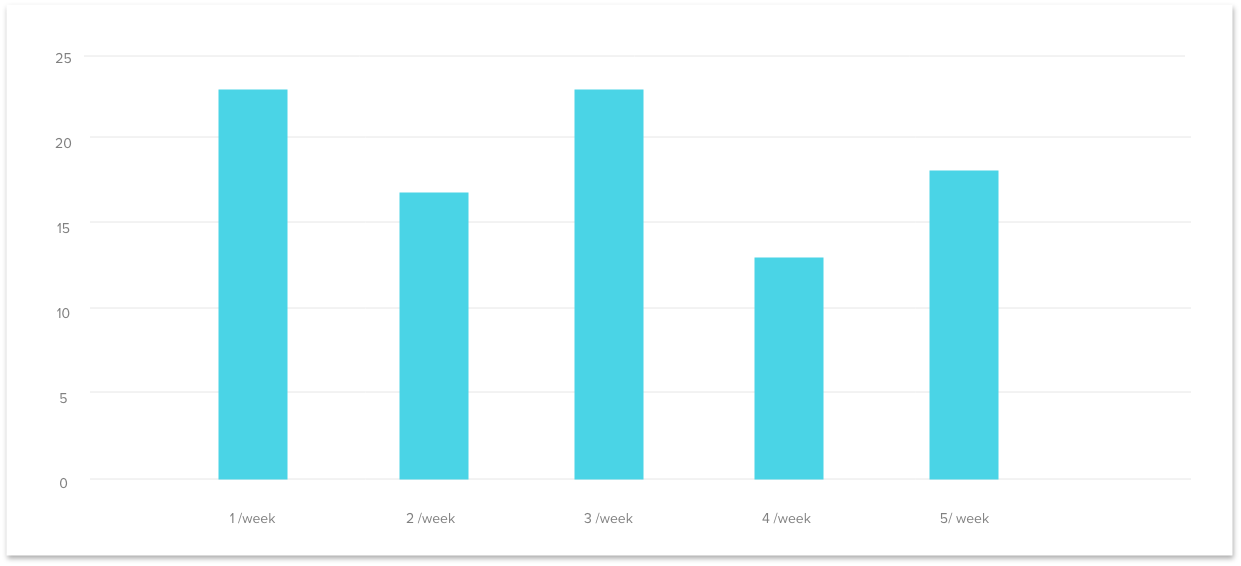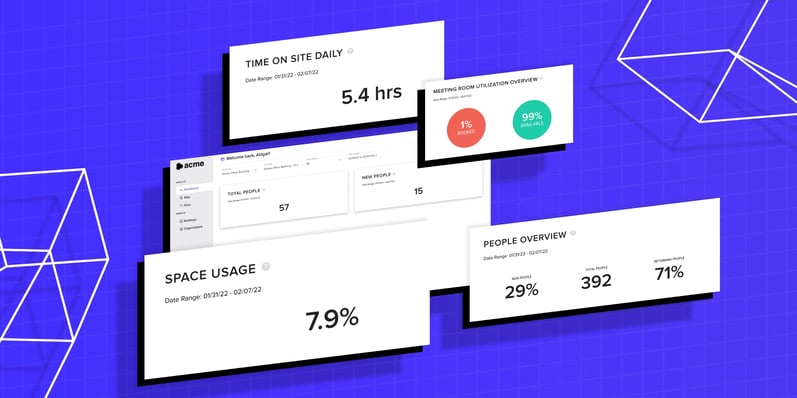5 Ways Businesses Can Use Occupancy Data in 2023
We find ourselves in the midst of an ever-evolving global situation. The impact of the ongoing pandemic continues to shape our daily lives. From intermittent lockdowns during the spring to cautious reopenings, many regions now face the imminent possibility of renewed closures as the number of cases starts to rise once again.
In this current climate, the responsibility falls on the shoulders of retail owners, office managers, and campus administrators to prioritize both the safety of individuals and the sustainability of their operations. Now, more than ever, effective management of occupancy levels within a space has become paramount.
Occupancy data has emerged as a crucial tool in this endeavor. It involves systematically measuring the number of people present in a building or specific areas within it over time. By doing so, it becomes possible to measure and analyze the volume of individuals in a given space, identify peak visitation times and days, and determine the most frequented areas.

For owners of businesses situated in office towers or expansive corporate complexes, the focus is on ensuring compliance with social distancing guidelines by carefully monitoring occupancy levels. In academic institutions, understanding the capacity of communal spaces like lecture halls and cafes is crucial. Meanwhile, retailers must adhere to local guidelines and regulations to ensure their premises do not exceed the recommended occupancy limits.

However, the significance of this data extends beyond its immediate purpose of managing crowd numbers and maintaining safe capacity thresholds. It provides valuable insights into the needs of both customers and employees, empowering businesses to deliver enhanced services, create safer environments, and offer automated experiences. By harnessing this data effectively, businesses can adapt and thrive in the face of the current challenges.
Five ways to get the most out of occupancy data
Here are five specific ways to use occupancy data in your business – for safety and for business continuity:
-
Measure occupancy levels
That’s right, get measuring. Occupancy is a major priority for anyone operating a physical building. Ensuring your space is being utilized to it's utmost ability means measuring the number of people in a space at any given time.
Retailers moved quickly on this at the early stages of the pandemic by employing security guards to count people in-and-out of their stores using a manual clicker. Now, as businesses roll out their RTO plan, there is a notion to have office buildings more than 50% occupied. It’s important to measure the number of people in a building – both in real time and retroactively – enabling a business to see the beginning of the story of the future of work. -
Feed digital signage
Occupancy data can flow straight into real-time signage in the office to show employees how busy a space is before they walk through the door. By setting thresholds across floor/building, the same data that can surface trends of when people prefer to visit the office, can be used to inform employees and help them to make choices on where to work. If a floor has reached capacity, floors with available seating surfaced to keep employees satisfied (and productive) in their workplace experience. -
Improve room booking systems
Here we take occupancy data a step further, to help benefit an organization's resources. Syncing this information directly into the internal mechanisms employees use to reserve meeting rooms, occupancy data can ensure that resources booked are indeed used. Anecdotally our clients have told us that one of their major challenges is many resources are booked the night before, and then sit empty the next day as employees change their work schedules. Occupancy data can release unused resources back into the system to optimize availability for other employees. This also provides more clarity for workplace/facilities teams to understand what’s truly happening in their space. -
Eliminate manual occupancy checks
Security guards standing at a store entrance, employees with clickers counting customers entering through the doors: rushing to address immediate needs of a pandemic, this approach was understandable. But now it represents an inefficient drain on resources. Using occupancy sensors can automate all of this, monitoring building occupancy in real time. The information can be integrated into consumer-facing apps or websites to keep customers informed of ideal times to visit a store, and upon arrival to know whether they can enter. The data can also be used to inform the customer of a potential wait time. Before COVID, we worked with a major coffee franchise demonstrating the impact wait times has on sales. Now, the same data is an ideal way for customers to know the precise situation inside.
-
Formulate a plan
Occupancy data can help businesses improve precision in their planning when it comes to resource allocation, services, cleaning, and staffing. And things can change in a hurry – occupancy data can provide accurate, timely assessments on traffic patterns, assess how strategies are performing, and determine how to adjust areas where occupancy is consistently over set thresholds. This, combined with an ability to support compliance and reporting, make occupancy a powerful datapoint to incorporate into today’s smart business.
The value of occupancy data cannot be overstated when it comes to informing key decisions. Running an efficient space and delivering new services to customers and new amenities to employees that need to stay informed – whether retail or campus or office – requires an understanding of the patterns and behavior of the people within it beyond occupancy data.
Accurate space utilization data through Wi-Fi?
We'll prove it to you.
See why industry leaders leverage InnerSpace to generate valuable insights that go beyond occupancy.

